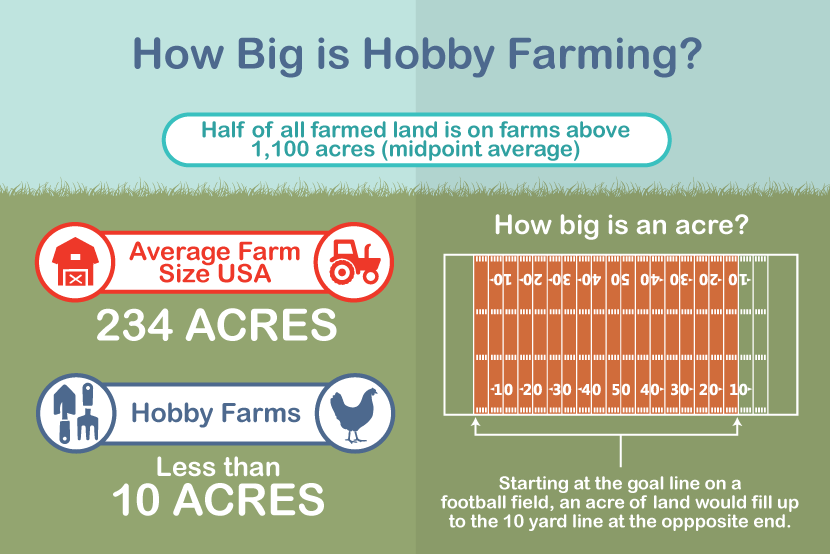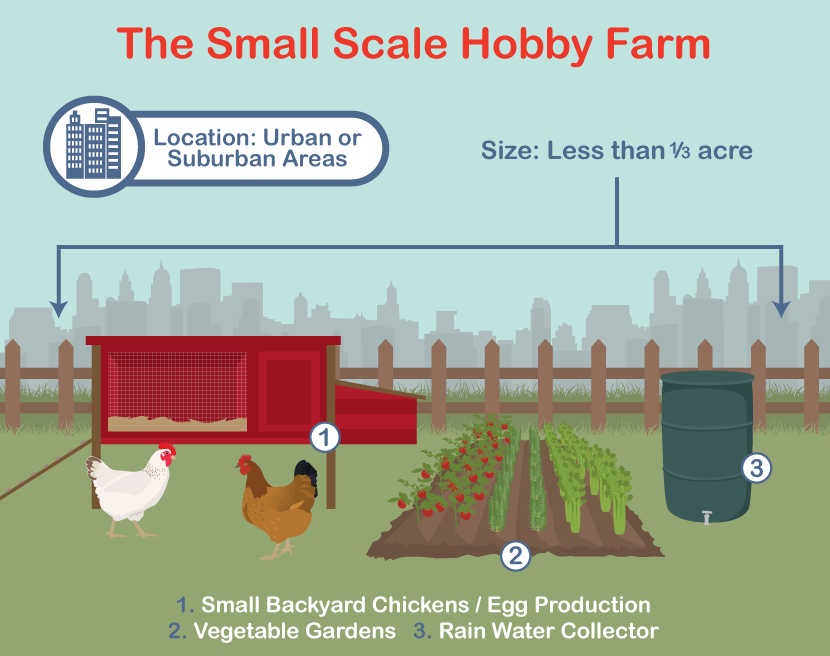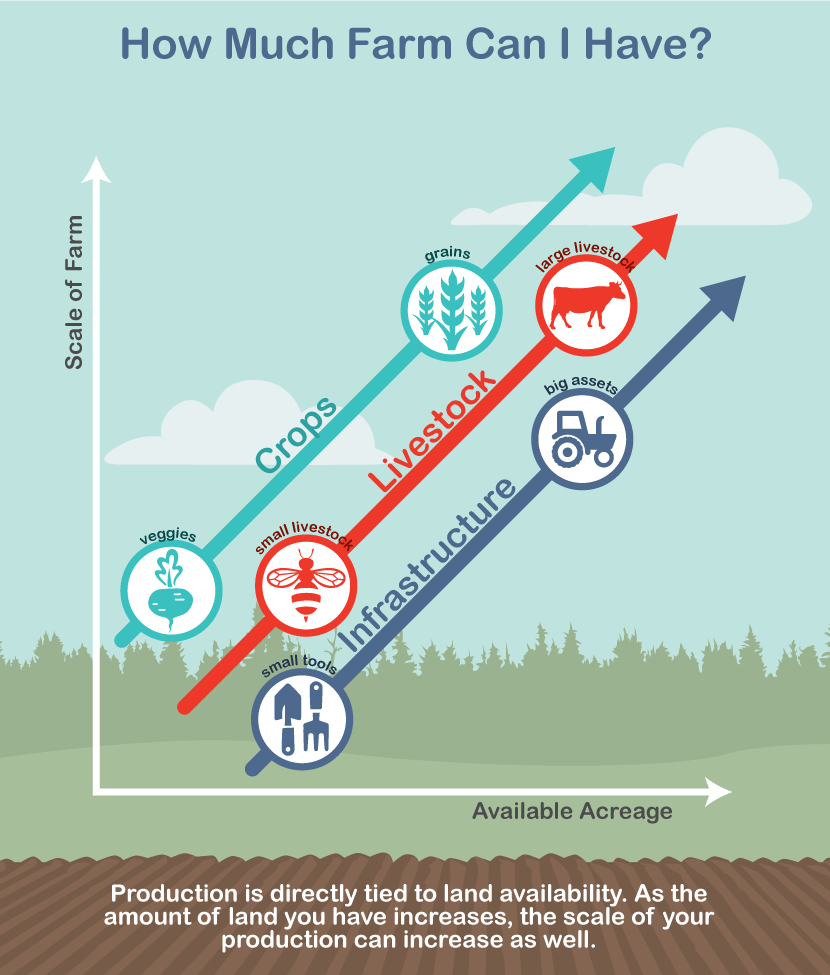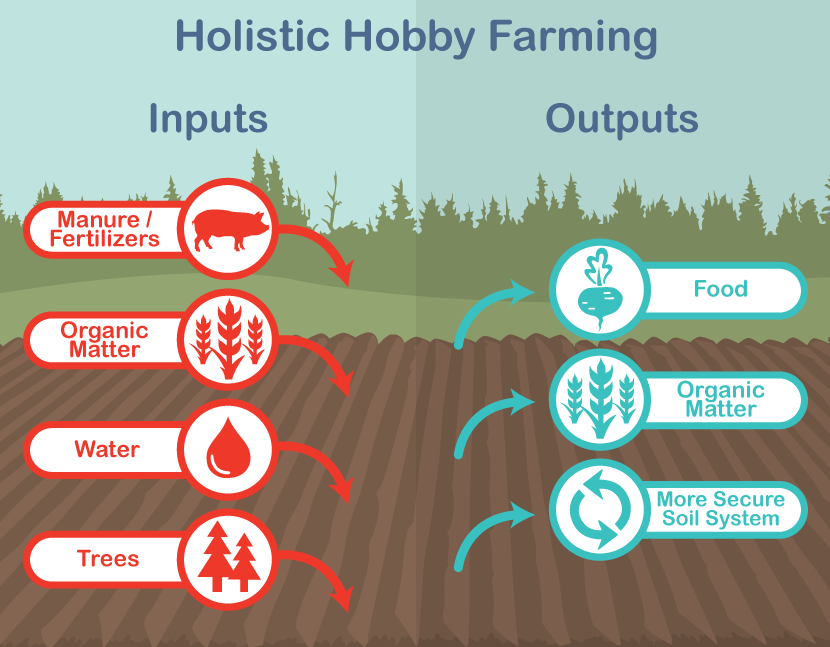Hobby Farming
Sustainable Home Food Production From Small Scale to Large
Given the rise in food prices, and increased interest in healthy nutrition, many folks are up-scaling their gardens to hobby farms. Hobby farms are more than a garden, but not quite a conventional farm. However, they take the operational essence of a fully fledged farm, miniaturized to fit your property. Hobby farms can drastically supplement your food and income, and provide the wonderful joy and satisfaction of running your own agricultural operation.
Most hobby farms sit on just a few acres. To provide some contrast, the average farm size in the US is 234 acres. Of all the farmed land in the US, half of it is on farms larger than 1,100 acres.

Based on the amount of land you have, there are different types of hobby farms. There are urban hobby farms, slightly larger suburban hobby farms, and the farmette. The latter is often considered the full-sized hobby farm.
Growing and supplementing your food, or creating an agri-business and generating income, are two of the main opportunities of hobby farms. Furthermore, your pantry will be overflowing with canned goods, honey, homemade wine, produce, home-cured meats, and farm-fresh free-range eggs. Your food bounty will vary depending on the focus of the farm.
Creating a Focus
Any hobby farmer will encounter limitations and constraints, primarily based on space and budget. This creates the need for a farm focus. Will your farm produce eggs and vegetables, or do you wish to support a cow for milking? This is one of the fundamental differences between a large garden and a hobby farm. A hobby farm should be designed to create a mutually beneficial environment for the crops and livestock of the farm. For example, chickens can be raised to provide fertilizer for your crops, along with their eggs; while planting in polycultures and rotating crops can maintain healthy soils and increase yields. Thinking like a farmer will help you manage the focus of your farm.
A hobby farm is also a place where wild edibles find a home. These include but are not limited to wild cherry choke trees, wild grape vines, mulberry trees, and elderberry bushes. Other food items that can be grown on a hobby farm include fig trees, loofahs, and beautyberry bushes. Wine or flavored oils can be made with dandelion greens, Jerusalem artichokes, and other food items growing on the farm. The hobby farmer on a larger scale might even provide their own dairy from goats or a milking cow. And they could grow their own wheat and never need enter a grocery store.

The Urban Hobby Farm
These very small hobby farms are a small homestead usually under one-third of an acre where backyard space is limited. Along with operating a successful garden, this hobby farmer will create compost, and even consider some livestock options like honeybees and chickens. This type of farm works well with a busy schedule, and is more relaxed.
It is very important to research, know, and follow your city ordinances, and maintain positive relationships with your neighbors. Even a tiny space can provide an abundance of food, especially if one incorporates some vertical gardening techniques and container gardening, and maximizes the use of indoor space such as windowsills.
The Suburban Hobby Farm
With an increase in space comes an increase in production. From one-third of an acre to five acres or so, there is some gray area between what is considered a suburban hobby farm and a full-fledged hobby farm.
However, many suburban homestead’s have guidelines under their home owners associations that they must follow; if you are currently searching for a property for a suburban hobby farm, you may want to pay attention to any covenants or associations with guidelines that might not permit farm animals on your land or in your neighborhood.
In suburbia, beehives should also be placed in areas away from fences and not too closely to neighbors to allay any concerns. On a suburban hobby farm, you’ll most likely be producing what you could in an urban setting, but may have room for goats, pigs, or even a horse. Keep in mind the more food you grow and the more livestock you add, the more labor and commitment will be required from the hobby farmer.

The Farmette – Typical Full-Sized Hobby Farm
Ranging from 5 to 50 acres, full-sized hobby farms are a real farm experience. Beyond the capability of residential hobby farms, one can add in livestock such as goats, pigs, and even cows, depending on the farm’s grassland or feeding capacity. Some farmettes are large enough to add orchards, cutting fields for flowers, and even a fish farm or a stocked fishing pond. The full-sized large hobby farm has potential for the hobby farmer to add cattle and horses, and to produce its own fertilizer to help the sustainability of the farm.

The joy and outputs of hobby farming make it a worthwhile pursuit, and the hobby farmer truly gets to literally enjoy and revel in the fruits of their labor. The hobby farm is a great place to let your farming dreams come true whether you are growing vegetables in pots or in rows, raising rabbits for meat, experiencing the joy of raising chickens or even keeping your own honeybees.
Embed the article on your site

